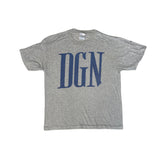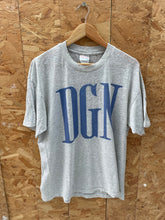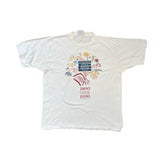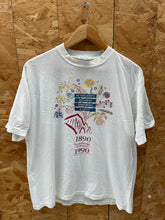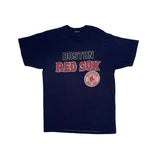The Parallel Histories of Gildan and Fruit of the Loom: A Tale of Two Apparel Giants
The clothing industry has seen the rise and fall of many giants, but few companies have left as indelible a mark on the world of basic apparel as Gildan and Fruit of the Loom. These two industry titans, though rooted in different eras and strategies, have followed similar yet divergent paths in their histories, both benefiting from and shaping global trends in fashion, manufacturing, and business. Their stories, marked by expansion, competition, and reinvention, provide a fascinating glimpse into the ebbs and flows of the apparel industry.

Origins: Fruit of the Loom, the Century-Old Legacy, and Gildan’s Late Start
Fruit of the Loom has a history that stretches back to 1851, when brothers Benjamin and Robert Knight founded the company in Rhode Island, USA. Originally focused on producing textiles like cotton muslin, the company soon became one of the earliest to register a trademark in 1871, solidifying its name as a pioneer in the American textile industry. By the early 20th century, Fruit of the Loom had evolved into a household name, synonymous with everyday basics like underwear, socks, and t-shirts. Its iconic fruit cluster logo became a symbol of quality and reliability for generations of consumers.
In contrast, Gildan came into existence more than a century later in 1984, founded in Montreal, Canada, by brothers Glenn and Greg Chamandy. Initially, Gildan produced children’s clothing but soon shifted its focus to manufacturing blank t-shirts for the wholesale market. This change was instrumental in positioning Gildan as a major player in the custom apparel industry, supplying shirts that would be screen-printed with everything from promotional logos to band merch. Gildan's ability to leverage the globalized economy with cost-effective production in Central America and the Caribbean gave it a unique edge.
The Rise of Gildan: Rapid Expansion and Global Dominance
While Fruit of the Loom had established itself as a legacy brand by the mid-20th century, Gildan was a fast mover in the late 1990s and early 2000s. Capitalizing on its low-cost production strategy, Gildan quickly became a leading supplier of blank t-shirts and other basics. Its competitive prices, driven by its efficient production network in countries like Honduras and Nicaragua, allowed it to disrupt the market traditionally dominated by brands like Fruit of the Loom and Hanes.
Gildan’s strategy of vertical integration, where the company controlled much of its supply chain—from yarn spinning to garment production—enabled it to reduce costs and maintain consistent quality. The company aggressively expanded its product offerings, moving beyond t-shirts into fleece, socks, and underwear. By the mid-2000s, Gildan had firmly established itself as a global player, catering to both bulk buyers and large retailers.
In 2017, Gildan made headlines when it acquired the troubled fashion brand American Apparel, expanding into the premium basics market and diversifying its offerings. This acquisition was part of a broader strategy by Gildan to move into more fashion-conscious segments, complementing its reputation as a go-to brand for blank apparel used in customization.
Fruit of the Loom’s Struggles and Reinvention
While Gildan was rapidly expanding, Fruit of the Loom faced its own set of challenges. After dominating the U.S. basics market for much of the 20th century, the company struggled with financial difficulties in the 1990s, culminating in a bankruptcy filing in 1999. The bankruptcy was triggered by declining profits, rising costs, and stiff competition from newer, more nimble competitors like Gildan.
In 2002, Fruit of the Loom was acquired by Warren Buffett’s Berkshire Hathaway, marking a new chapter for the brand. Under Berkshire’s ownership, Fruit of the Loom was able to stabilize and gradually regain its footing. The company modernized its operations and expanded its product lines, introducing new fits, styles, and fabrics to appeal to evolving consumer preferences. Fruit of the Loom’s status as a reliable, affordable brand remained intact, but the company faced the challenge of staying relevant in a market that was increasingly globalized and fragmented.
Parallel Strategies: Sustainability and Ethical Production
Both Gildan and Fruit of the Loom have embraced sustainability and ethical manufacturing in response to growing consumer demand for transparency and eco-friendly practices. Gildan, in particular, has made significant strides with its Genuine Responsibility® program, focusing on reducing environmental impact through water conservation, energy efficiency, and responsible sourcing of materials. The company’s large-scale, vertically integrated factories allow it to implement sustainable practices at each step of production, from cotton sourcing to waste management.
Fruit of the Loom, too, has prioritized sustainability, particularly in recent years. The company has invested in more sustainable materials and eco-friendly production processes, aiming to reduce its carbon footprint and appeal to environmentally conscious consumers. Under Berkshire Hathaway’s leadership, Fruit of the Loom has placed a strong emphasis on ethical labor practices, ensuring that workers in its factories are treated fairly and provided with safe working conditions.
Competition and Coexistence: The Battle for Basics
Throughout the 2000s and 2010s, Gildan and Fruit of the Loom became the two dominant forces in the basic apparel market, often competing head-to-head for market share. Both companies targeted the same core markets—wholesale buyers, screen printers, and large retailers like Walmart and Target—while also catering to individual consumers looking for affordable, reliable basics.
However, while Gildan focused heavily on the blank apparel market, Fruit of the Loom remained more consumer-facing, with a focus on branded underwear, t-shirts, and socks for everyday wear. Gildan’s strategy of acquiring competitors and diversifying its product offerings—such as the acquisition of Comfort Colors and Anvil—gave it a broader portfolio, allowing it to appeal to a wider range of buyers.
Despite the competition, both companies have managed to carve out distinct identities within the basics market. Gildan has positioned itself as the go-to brand for custom apparel and affordable basics, while Fruit of the Loom remains a trusted name for consumers seeking everyday essentials with a reputation for durability and comfort.
The Future: Navigating an Evolving Market
As the apparel market continues to evolve, both Gildan and Fruit of the Loom face new challenges and opportunities. The rise of e-commerce, fast fashion, and increasing demand for sustainable products has forced both brands to adapt. Gildan's move into more fashion-forward and premium segments, through acquisitions like American Apparel, signals its desire to stay relevant in an ever-changing landscape. Meanwhile, Fruit of the Loom's focus on sustainability and ethical practices under the steady hand of Berkshire Hathaway suggests a long-term vision of responsible growth.
While Gildan's rapid ascent and aggressive acquisition strategy have allowed it to become a global leader in blank apparel, Fruit of the Loom's legacy and ability to reinvent itself demonstrate its staying power in a competitive market. Both companies, despite their different paths, have shaped the basic apparel industry, and their parallel histories offer valuable insights into the dynamics of business resilience, adaptation, and competition.
In the coming years, the success of these two brands will depend on their ability to meet consumer demands for sustainability, quality, and affordability—values that both Gildan and Fruit of the Loom have long championed in their own ways.

